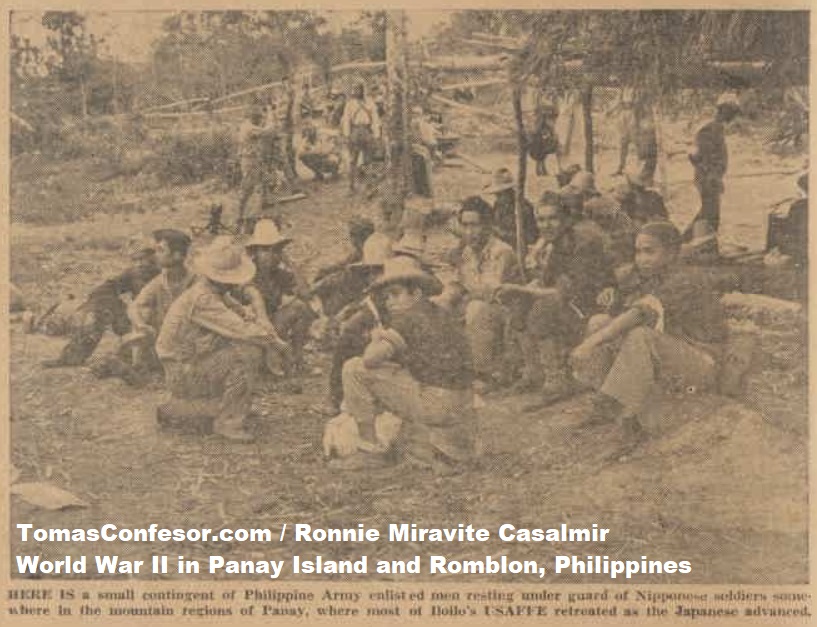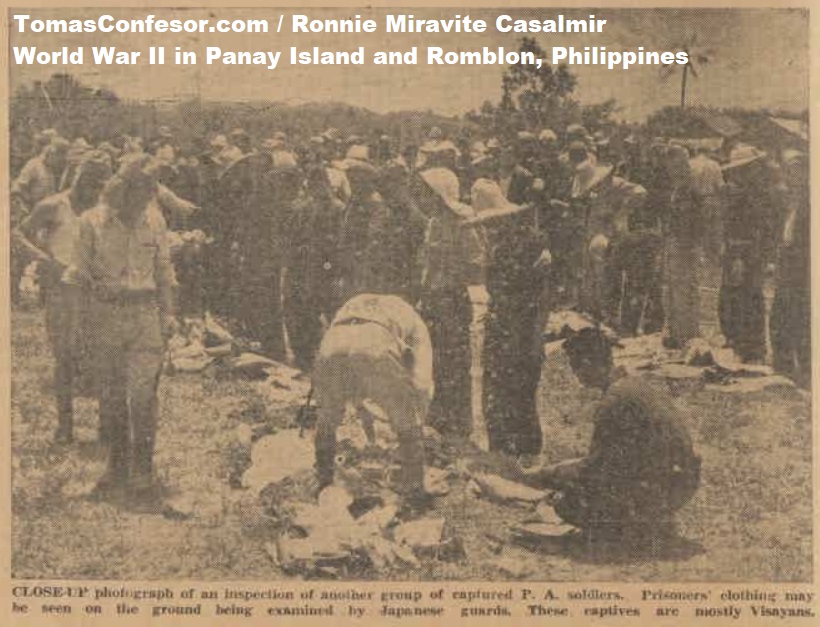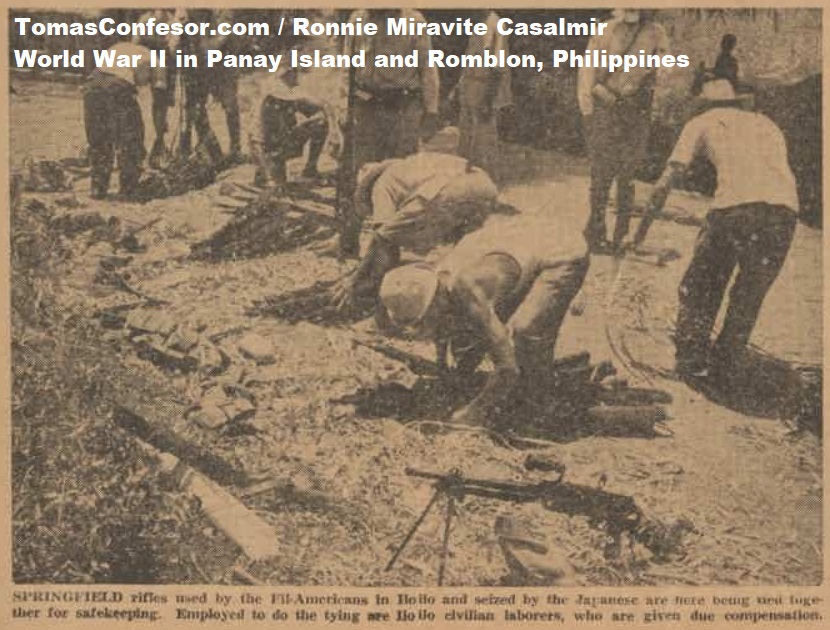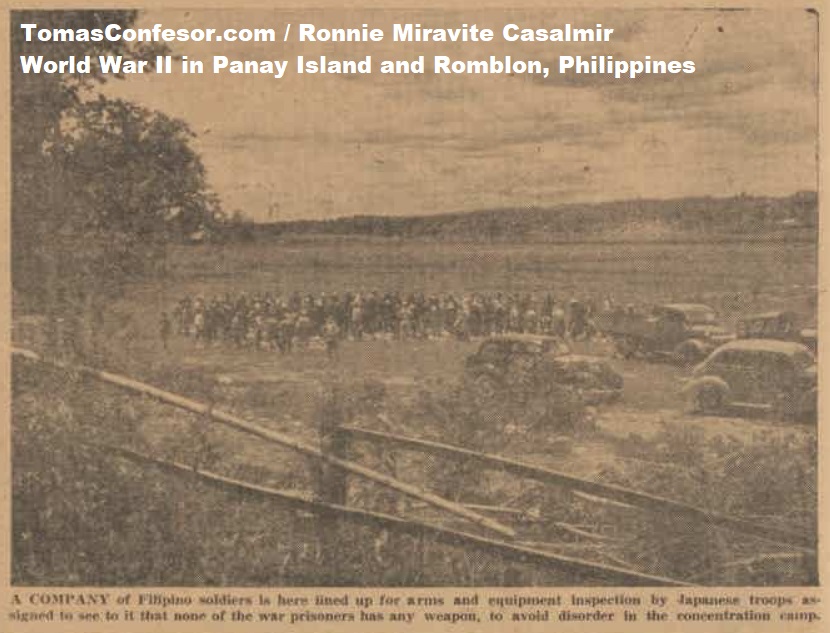
HERE IS a small contingent of Pliilippine Army enlisted men resting under guard of Nipponese soldiers some where in the mountain regions of Panay, where most ot lloilo's USAFFE retreated as the Japanese advanced.

CLOSE-UP photograph of an inspection of another group of captured P. A. soldiers. Prisoners' clothing may be seen on the ground, being examined by Japanese guards. These captives are mostly Visayans.

SPRINGFIELD rifles used by the Fil-Americans In Iloilo and seized by the Japanese are here being tied together for safekeeping. Employed to do the tying are Iloilo civilian laborers, who are given due compensation.

AWAITING orders from their captors are these prisoners of war, disarmed and ready to go wherever directed. Developments indicate that their release may depend on peace and order in their provinces.

A COMPANY of Filipino soldiers is here lined up for arms and equipment inspection by Japanese troops assigned to see to it that none of the war prisoners has any weapon, to avoid disorder in the concentration camp.

IN THE foreground, facing the camera and flanked by Japanese soldiers, are two Filipino captains (see bars on caps), one a combatant officer and the other a P. A. medical man, as shown by his Red Cross armband.
|
May 19, 1945 - Lt. Col. Allan Thayer, staff officer of the USFIP, arrived at Cabatuan Airfield (in Cabatuan, Iloilo) in order to coordinate the surrender of the USAFFE in Panay. May 24, 1945 - Division Commander Christie and 1,800 men surrendered to the Japanese force. May 29, 1945 - A U.S. major surrendered to the Takahashi Company of the Japanese Army at Daja, Maasin. - The Blood and Mud in the Philippines |
|
During the time that the Kawamura Detachment was operating in Panay, the Japanese forces in Luzon had launched a general attack on Corregidor. At Corregidor on May 6, 1942, US Lieutenant General Jonathan Wainwright surrendered all US and Philippine forces that had been resisting the Japanese throughout the Philippine Islands.
Lieutenant Colonel Alan Thayer was a staff officer of the USFIP (US Forces in the Philippines) assigned to the Visayas and Mindanao.13 In the early morning of May 19, he flew to the town of Cabatuan, Iloilo, with Japanese escorts. He relayed the order of surrender issued by Major General Willlam F. Sharp, Commander for Visayas and Mindanao to Colonel Alben Christie of the 61st Division situated at Mt. Baloy. On May 24, 1942, Colonel Christie and other high-ranking officers surrendered to the Japanese Army with about 1,800 soldiers. The remaining 6,000 officers and men either remained in seclusion in the mountains with their weapons or went home to their families. This resulted to the apparent break-up of the military organization in Panay. - The Blood and Mud in the Philippines, Section 1.2 |

